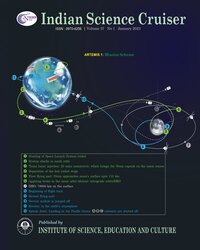Manipulation in Single Quantum System (Quantum Measurement Revisited)
Subscribe/Renew Journal
The “optical cavity” for trapping atoms is a very powerful technique to trap different types of atoms and study the different possible states of matter: insulation, superconductivity, Bose- Einstein condensate. Generally, as the number of atoms trapped in the cavity is generally quite low, one has to cool them to very low temperatures (approaching absolute zero via laser cooling and controlled evaporation) so that the their de Broglie wavelength becomes large allowing the quantum Bose-Einstein and Fermi-Dirac statistics come into play. One uses the Feshbach resonance to vary the interaction between the particles and reach the different states of matter. The most precise optical clock with a relative precision of approaching 10-18 is based on an optical clock. Moreover, the QM entanglemnt process for a number of particles can be set up and followed. One has gone even farther by studying the dispersion relations and the different-sound velocities in these cavities.

Abstract Views: 280

PDF Views: 3



